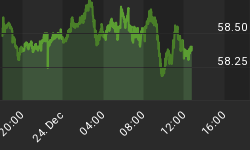This article is adapted from issue one of The Silver Analyst.
What is the real price of an ounce of silver and just how widespread should a silver bull market be? We have watched over the last few years as the price of silver in US dollars has marched upwards from the lows of $4 to the recent highs of $15. However, the good luck of silver has been mainly laid at the door of the bad luck of US dollar. The US dollar depreciates and hence the price of silver in US dollars appreciates. Seems a simple enough equation, but surely a real bull market will stand on its own merits and not on the misfortunes of another? With that in mind, is silver worth investing in by lovers of silver from other countries across the globe?
To answer that question, I have come up with the Silver Analyst Composite Price or the SACP for short. The SACP attempts to ask the question of how much is silver really worth. As I said, silver is increasing in US dollar terms but the US dollar is also depreciating in the international currency markets. Based on this, we may fear that silver may not be faring so well in other major currencies such as the Yen or Euro. If the silver bull market is for real, we should expect to see an increase internationally and across the board.
To that end, the SACP is an equally weighted composite of the silver spot price in six major world currencies. These are the US dollar, the Euro, the Yen, the British pound, the Canadian dollar and the Australian dollar. The chart is then rebased to the start of the silver bull market in June 2003 where the SACP is set to one. In this way we can see exactly how the international silver bull market has progressed in the last three and a half years. As you examine the chart below, the international bull market hit a recent peak of 2.95 on the 12th May 2006. That tells you right away that silver as measured across a broad range of currencies has almost tripled in price since June 2003. In other words, it's an international bull market in silver after all!

In fact, there is not too great a disparity between silver prices across the globe. If one looked at the US dollar price rebased to the bull market start, you would get a corresponding multiple of 3.31 indicating that though the US dollar-denominated bull market is the strongest of the six, silver is 12% weaker on a global basis. The table below gives the end of year values for each currency rebased to 1 from the start of the silver bull market:
Currency | US Dollar | Australian Dollar | Canadian Dollar | British Pound | Japanese Yen | Euro | SACP |
Value | 3.03 | 2.53 | 2.55 | 2.59 | 2.99 | 2.69 | 2.73 |
As you can see, silver as priced in Australian dollars has shown the poorest performance with a 2.55 increase in their silver price since the bull began – such is the nature of currencies linked to commodity rich countries. However, the Yen is not far behind the US dollar at 2.99. Needless to say, since we see the silver bull market as an inverse to the US dollar bear market, we expect the US dollar to stay ahead in this table of comparative currencies. There will be other currencies where silver is in an even more raging bull market, we think of the unfortunate holders of the rapidly inflating Zimbabwean Dollar for example.
We also add the 200-day moving average for this composite price that has generally proven to be a level of support during the bull market. At year-end it was at about 2.50 with the composite price at 2.73, so we could see some testing of this level before the bull resumes. Each month, we intend to update this chart for subscribers to give a definitive picture of just where the international bull market in silver is.
But to ask one final question, if the silver bull market is largely just reflecting a US dollar bear market, then why is it increasing globally against other currencies that are appreciating against the dollar?
The answer is quite simply relative supply. As holders of US dollars move into Euros or Pounds to hedge themselves against any drop in their dollar denominated assets, they naturally increase demand for these fiat products. As investors buy up treasuries, notes or derivatives in these currencies, the demand is met in the time honoured fiat fashion by creation ex nihilo. That is, the central and commercial banks of these countries create the money out of thin air to meet demand.
Now this can be a two edged sword for the governments issuing these currencies depending on how they want economic growth and interest rates to go. But for silver it is a different picture. As demand for silver increase from US dollar holders, no one can press a computer key and magic silver out of nothing to quietly balance supply and demand. Demand has to be met from mine supply or above ground stocks and since silver is an internationally traded commodity, this ripples out to all silver markets everywhere.
Central banks may curtail demand for Euros and Pounds by constricting the money supply but the silver supply is already constrained by geology and holders of silver who expect higher prices. That is why the silver bull market is an international bull market and will remain so until the fortunes of the US dollar revives again.
Further silver analysis can be obtained by going to our silver blog at http://silveranalyst.blogspot.com where readers can obtain the first issue of The Silver Analyst free and learn about subscription details. Comments and questions are also invited via email to silveranalysis@yahoo.co.uk.
















